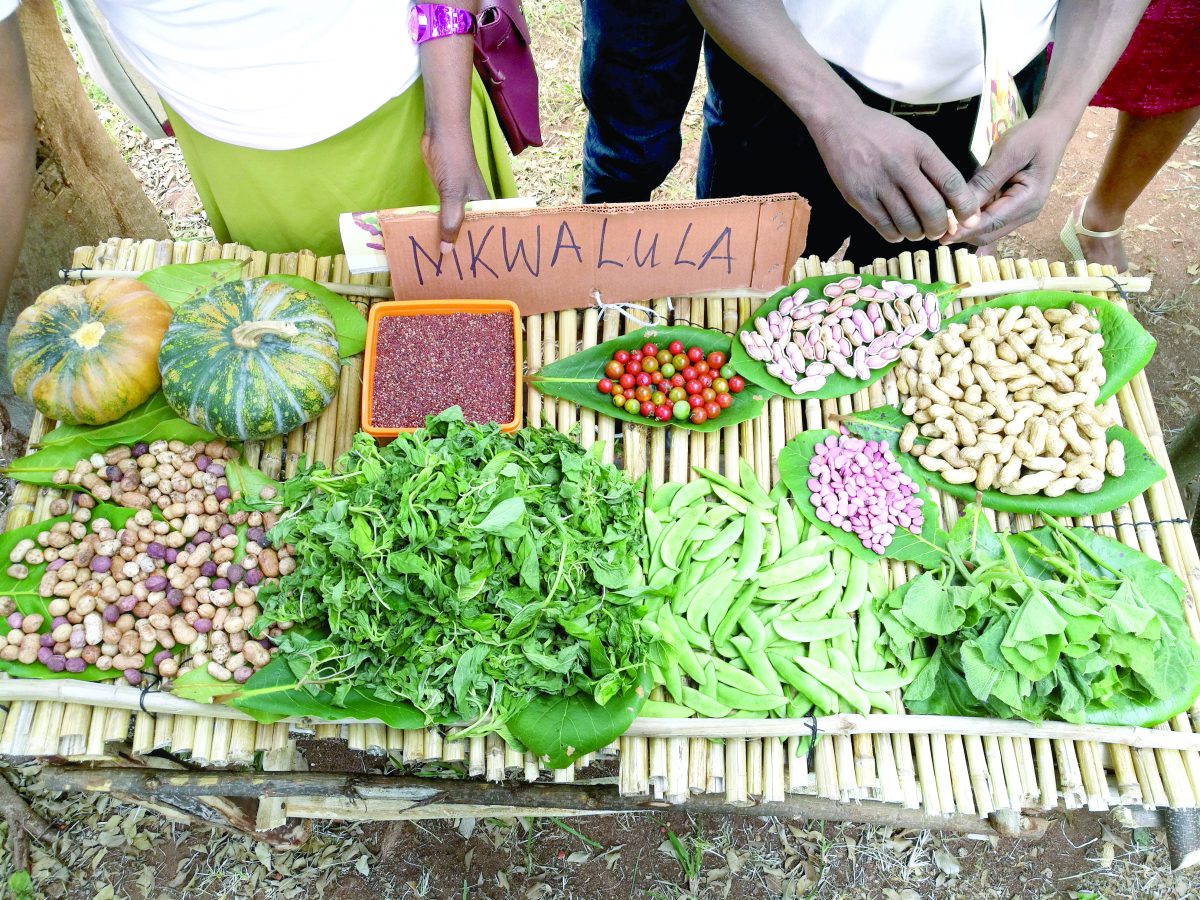Kenyans urged to eat, grow indigenous foods for nutrition
By Sandra.Wekesa, September 26, 2023Kenyans have been encouraged to increase consumption and diversify into growing of indigenous food for a healthier diet.
Speaking during the first ever National Dialogue dubbed Indigenous Foods for Health and Wealth, which focussed on the role of the private sector in increasing consumption of affordable and safe indigenous foods for healthier diets in Kenya in Nairobi recently, agronomists discussed the need to recognise the impacts that some of the unhealthy foods have in terms of non-communicable diseases.
They said many people have relied so much on maize, wheat and Irish potatoes leaving out other healthy crops, such as sorghum, millets, cassava and arrowroots that are rich in key nutrients, such as iron and zinc.
They said for many years, indigenous foods in the country have been considered a ‘poor man’s food’ leading to their low consumption despite their nutritional value.
According to Kenya Demographic and Health Survey (KDHS) 2022, 18 per cent of children are stunted, 28 per cent of Kenyans are obese, 38.9 per cent of women are affected by anaemia and the iron deficiency in children is more than 16 per cent.
Agriculture Cabinet Secretary Mithika Linturi in a speech read on his behalf by the Director in the State Department for Crop Development Justina Nelima revealed that the nation is currently grappling with a triple burden of malnutrition, which includes undernutrition, overweight, and obesity, as well as micronutrient deficiencies, primarily due to the limited adoption of indigenous foods by the population.
He said the government has committed in providing resources and a conducive policy environment to ensure there is enhanced adoption of technologies, information and knowledge in all food systems.
“Most indigenous foods are underutilised thereby driving the production down and with that, the private sector can play a critical role in driving the consumption campaign through consumer education, value addition of the foods, investment in processing, research and encouraging production by entering into contract farming with farmers,” he said.
African leafy vegetables
He said the ministry has put in the effort to promote production and consumption of the indigenous foods, which has resulted in increased production and consumption of these foods. “The One Million Kitchen Garden Initiative launched in 2020, which emphasised production of the African leafy vegetable has contributed to increased production and consumption of these vegetables,” he said.
He pointed out that currently, the Ministry is promoting the flour blending initiative with the goal of incorporating these foods in our flours.
Kenya is well-endowed with agro-biodiversity with more than 200 African indigenous vegetables species. According to research, out of about 200 indigenous plant species used as leafy vegetables in the country, only a few have been fully domesticated and a number semi-domesticated, while most are wild.
Unfortunately, despite the aforesaid assertion, most native Kenyan foods fell off the food supply during the colonial era, when new and more marketable crops, such as maize and wheat became the most preferred over traditional foods, such as sorghum, millet, cassava, cowpeas and green grams.
Challenges persist in sustainable and inclusive food systems, including food insecurity, weak agri-food value chains, economic disparities, and environmental vulnerability.
Although the Sustainable Development Goal 2 (SDG2), which is Zero Hunger, spells out the need to end hunger in order to achieve food security and improved nutrition, and promote sustainable agriculture.
On his part, David Rogers, the Deputy Director of the Office of Economic Growth and Integration at the United States Agency for International Development (USAID) for the Kenya and East Africa region said Kenya is yet to address such issues and in order for this to happen, they need to ensure they have sustainable food production systems and implement resilient agricultural practices.
He highlighted that this would increase productivity and production, which will help maintain ecosystems, that strengthen capacity for adaptation to climate change, extreme weather, drought, flooding, and other disasters, and that progressively improve land and soil quality.
Food security
“Partnering with private sector to quickly expand indigenous food security production may require unconventional approaches, such as reducing or even removing, or subsidising the cost of seed certification for a few seasons to incentivise growers in order for them to produce larger quantities of seeds,” he said.
In addition, increasing the consumption of indigenous foods and improving nutrition would enhance food security and improve farmers’ incomes and preserve Kenyans heritage through the indigenous foods.
He noted that USAID will work with the government to make it easier for farmers to produce drought tolerant fast growing seeds while recognising that that climate extremes are increasing in intensity and frequency and ultimately people’s ability to produce and access sufficient food.
“Jointly we can, therefore, enhance climate mitigation and adaptation to support vulnerable populations to maintain healthy, productive, and resilient ecosystems,” echoed Josephine Mweu, World Food Programme (WFP) representative.
She added that a refocus on the indigenous crops and livestock food systems has become more important now than ever before.
“In 2022 WFP supported nearly 700,000 people with resilience building initiatives such as developing irrigation infrastructure, small holder agriculture and market support, introducing drought-resistant crops -particularly bio fortified orange flesh sweet potatoes and high iron rich beans as well as alternative livelihood initiatives such as bee keeping. Nutrition integration in these small holder initiatives remains critical,” she noted.
In addition, food safety and quality is paramount in the agri-food systems.
Although access to nutritious foods is largely determined by the affordability of nutritious diets, availability and desirability are also critical in ensuring access to nutrient-adequate diets.
The event was funded by the USAID Feed the Future Kenya Crops and Dairy Market Systems (KCDMS) in collaboration with the Ministry of Agriculture and Livestock Development and the private sector.
